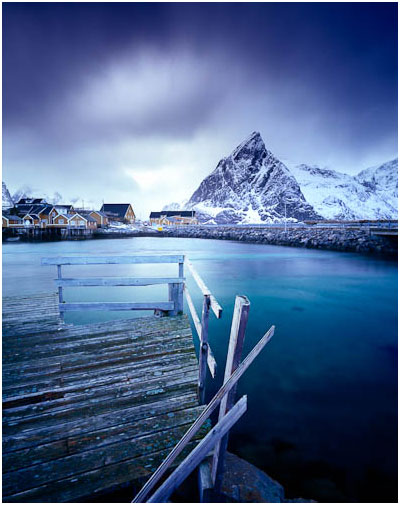This was written at the beginning of this week. I'm currently back in the Lofoten islands, Norway. It is now a week later, and I've experienced so much different light than the kind I describe in the draft posting I wrote earlier this week, which I hope to share with you in a few days time. Until then, read on.....

This week, I’m back in Lofoten, Norway. Sunrise is at 10:50am and it set again at 12:57.
When my friend Lilian suggested I come here to experience Morkid (the dark time) I was intrigued. I thought it might bring some new dimension to how I look at things around me and how I perceive light in general.
Today is the first day that I’ve been outside with my camera. Because the sky is heavy with dark clouds, the entire landscape feels much more low in mood.
There were a few things that happened today, which I feel I’ve learnt about the light in Norway. It seems that everything here is the inverse of how I normally work with light. I favour cloudy skies because of the reduced contrast. Clouds also help light bounce around the landscape, making everything appear to be lit from the ground up. Clouds also make for interesting skies.
Here in Lofoten, there was so much cloud cover today that I felt really hemmed in. I had a feeling of claustrophobia and tiredness because the light levels were so low. However, the light levels at sunset appeared to be brighter, and I felt more alert and happier than I did during the middle of the day. I think this was because having such low light levels in the middle of the day felt very strange to me. It was as if my body clock didn’t quite know where to place itself, and once sunset began, it was as if I found my timing and things were back on track. It also however, felt brighter at sunset today, simply because the cloud cover dispersed and I was able to see colours in the sky. There were reds and blues that I had not detected during the low mood of the rest of the day, and as subtle as they were, I found my eye reaching for them.
My mood was also affected by what I experienced today. I had no idea that we could yearn for the sun so badly. I’ve only been here a few days, and I’m not aware of missing the sun just yet, so it was interesting to find that instead of wishing to photograph away from the sun, as is my normal practice, I wanted to chase where the sun was, keep heading for it, and also point my camera in its direction also.
I had never considered that we are like plants that need to be fed by the suns rays. Nor had I considered that the sun would be so central to my sense of wellbeing and belonging. Because there was so little colour today, when I did detect some very subtle shades of blue and red in the sky (almost non detectable), they had me routed to my spot, attempting to drink them in with my eyes. I felt that light and colour was out of reach, something just off shore, a little bit out of distance from me, and I looked upon them with a sense of wonder. I found my spirits were extremely uplifted by the spectacle of noticing some subtle colour in the sky.
I feel I’ve learned a little bit more about my attraction to light. When there is very little of it, what is there, behaves as a beackon, a source of inspiration and happiness to me. I seem to find my mood is immensely affected by light or the lack of it. I'm not surprised that there are many stories in the world where good and evil are signified by light and darkness.
Postscript: It's been a few days since I wrote this, and I've shot quite a lot of film, in very different light. Each day seems to be entirely different and I've seen dark days that were so dark I didn't really feel happy about things, to beautiful days with magenta skies and pink snow for 4 hours of daylight a day and it's been really stunning to shoot in it.
I took my Mamiya 7II system along with my Hasselblad 500CM with me to Norway, and I've not used the Mamiya at all. I'm really pleased to have found time to focus on getting into the Hasselblad. I find that the square aspect ratio is 'shaking up' my photography style a little and making me look differently at the landscape. I also like the entirely mechanical aspect of the camera. I've been making exposures into the minutes and even beyond 10 minutes at times here, and it's nice to know there is no battery drain happening while I do it. I'm feeling very enthused by the change of camera. I guess we all need to try new things once in a while, and certainly by using a camera with different features, or a different aspect ratio, it really does exercise the brain into working on compositions in a different way.
I still love my Mamiya 7II camera, and I won't be parting with it, but just like the Contax 645 system I have for making portraits, I feel that the Hasselblad this week has allowed me to expand what I do, and reach a little further into longer exposures and to think differently about composition.
pps. The sun is now rising at 11:30am and setting at 12:23pm!
